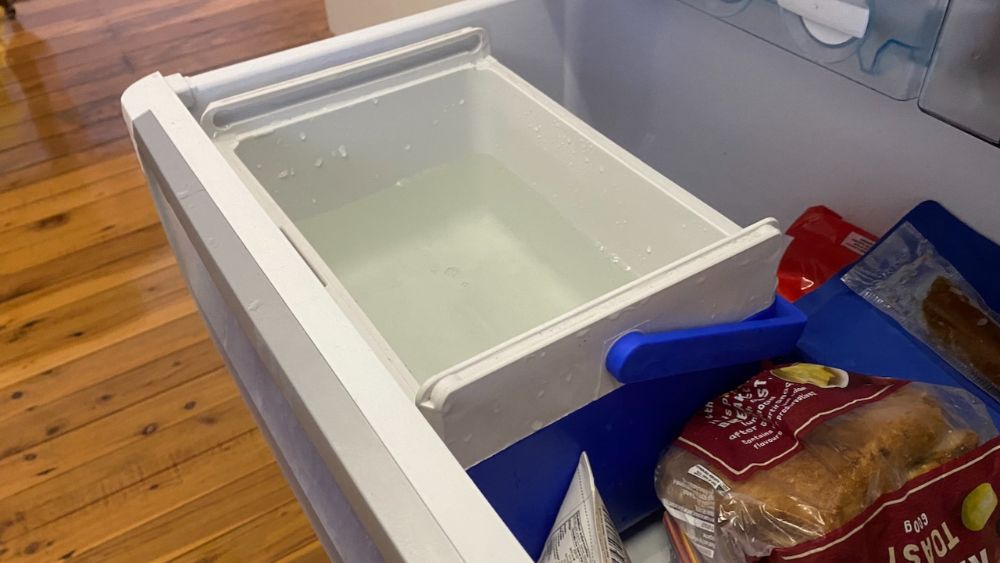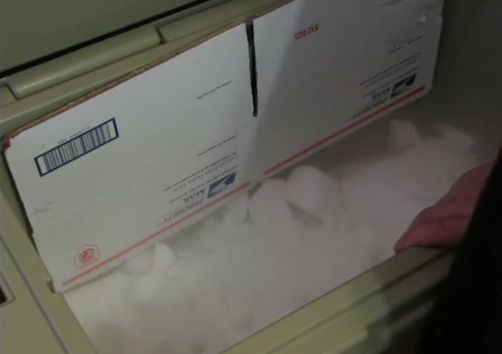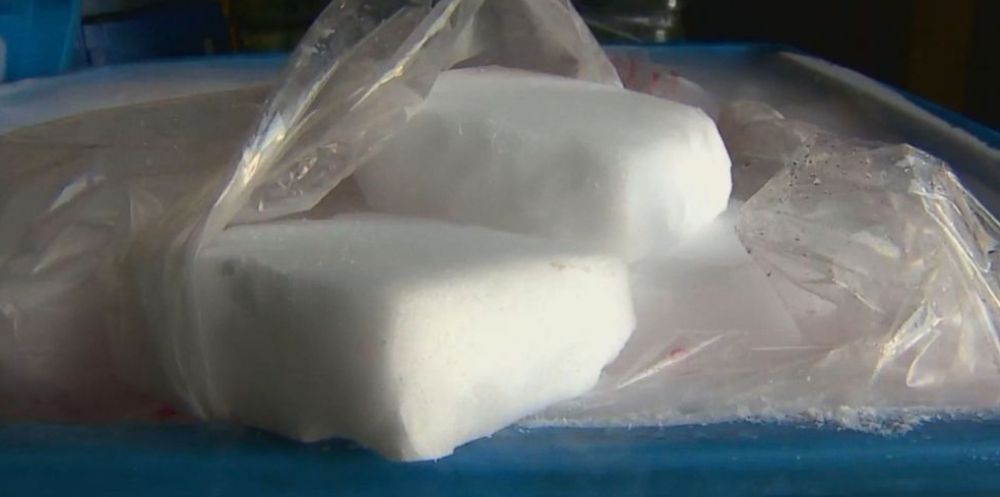When you're looking to keep things cold without electricity the two most popular options are regular ice and dry ice.
While both are called “ice” there are extremely different and each offers different pros and cons.
So which is better? Is regular ice the better choice or is the more expensive and colder dry ice actually the better option?
Dry ice is colder than regular ice making it better at keeping things frozen. It also turns directly into gas so won't make things wet. Regular ice, on the other hand, is cheaper, more widely accessible and safer to use than dry ice. In most cases regular ice will be the best option but in some case (eg. shipping goods) dry ice's qualities make it the better choice.
Both dry ice and regular ice have their pros and cons and each has circumstances where it is the better choice.
Pros of Regular Ice
Honestly, most of the time regular ice should work just fine.
Regular Ice Keeps Things Cold Just Fine

As long as you have a good cooler (see the best coolers for ice retention), regular ice should keep just about anything you choose to store in there nice and cool for a while.
For example, if you are taking your cooler to the beach or out into the woods for some camping, you should be fine if you simply stock it with regular ice.
It can keep anything from cans of soda and beer to meat and cheeses to veggies nice and cold, soft, and fresh.
What’s more, as long as the cooler isn’t left open and it doesn’t leak, it should be able to trap the cold given off by your ice well enough to preserve it for a couple of days.
Regular Ice Is Easier To Get Than Dry Ice

Another good thing about regular ice is that it’s way easier to get than dry ice.
If you want to get a huge bag of it you can do so easily from most gas stations and supermarkets.
Dry ice is still available at a lot of different supermarkets but it's not as easy to get as regular ice.
Click here to learn exactly where to buy dry ice
Regular Ice Is A Lot Cheaper Than Dry Ice

Dry ice isn't super expensive. It usually only costs about $1-$3 per pound and even less if you purchase in bulk.
However, regular ice is even cheaper than that. Often costing around 20-30c per pound. That's 10x cheaper than dry ice.
If you're trying to fill up a large cooler with dry ice it can get really expensive really quickly. But using regular ice it's much cheaper.
Below you can see some price comparisons for the cost of regular ice and dry ice at a couple of different grocery stores.
| Seller | Regular Ice Cost (20 lbs) | Regular Ice Cost (per lb) | Dry Ice Cost (1 lb) | Dry Ice Cost (per lb) |
|---|---|---|---|---|
| Walmart | $3.88 | $0.19/lb | $1.44 | $1.44/lb |
| Meijer | $4.39 | $0.22/lb | $2.39 | $2.39/lb |
| Safeway | $5.99 | $0.30/lb |
As you can see dry ice is significantly more expensive than regular ice.
You Can Make Regular Ice Yourself

Making regular ice yourself is easy. Just throw some water in the freezer and leave it overnight and voila you've got ice. But making dry ice at home is extremely difficult.
To make dry ice at home you need to have pressurized liquid carbon dioxide. The only way to get this is usually through a fire extinguisher. Which is a difficult and expensive way to make dry ice.
If you're trying to keep a cooler cold I suggest making block ice at home as this ice lasts much longer than regular ice.
The Pros of Dry Ice
While regular ice is going to be the best choice in most circumstances there are some real benefits of dry ice which sometimes makes it the better choice.
Dry Ice Is Much Colder Than Regular Ice

Dry ice is undeniably colder than regular ice.
It's made from frozen carbon dioxide and it's an intense -109ºF (-78ºC) whereas ice produced by your freezer at home is usually only around 0ºF (-18ºC) or just below freezing.
Dry ice doesn’t just keep things cool like regular ice but actively freezes them. If that’s what you’re looking to do when putting something into your cooler then you’ll want to use dry ice.
This also means that dry ice can be a better choice when shipping things long distance if they need to stay extremely cold or completely frozen.
Dry ice is also better when you want to transport ice cream. Regular ice cannot keep ice cream cool for long, and it will melt soon enough. By contrast, dry ice can keep ice cream as cold as it would be if it was stored in a freezer. Sometimes even too cold.
Dry Ice Doesn't Make Things Wet

When regular ice melts it turns into water and collects in the bottom of your cooler.
Give it enough time and all of the items in your cooler will become completely submerged in ice. There are ways to stop items getting wet in your cooler by protecting them from the water but with dry ice you don't have to worry about this at all.
Dry ice gets the “dry” in it's name from the fact that the ice doesn't melt it “sublimates” (or turns directly into gas). This means you can dispose of dry ice by simply leaving it outside and it'll eventually all blow away in the breeze.
This means there is no liquid left over to make anything wet.
This is ideal when shipping items or transporting frozen goods and the shipping boxes will often get jostled around and if they had melted ice water in the everything could get very wet.
Dry Ice Can Be Used With Regular Ice
You can also use dry ice to keep the regular ice in a cooler colder for longer.
As the dry ice begins to sublimate into gas, the regular ice will still be present and should remain at colder temperatures than they would otherwise.
This can extend not just the life of your ice but that of your cooler.
The Cons of Dry Ice
While dry ice does have some benefits over regular ice there are also some negative aspects of dry ice that may make it unsuitable for use.
Dry Ice Will Freeze Things, Even If You Don't Want Them Frozen

Unfortunately, dry ice’s ability to freeze everything fast and for long periods of time is a weakness as well as a strength.
You can’t put a can of soda or beer into a cooler with dry ice.
At best, it will freeze solid, and at worst the pressure on the can from the liquid freezing will be so great that it will burst, leaving a huge mess in the cooler.
Dry Ice Is More Dangerous Than Regular Ice

That’s just a taste of how powerful dry ice can be.
If you aren’t careful, holding it for more than a second can seriously burn your skin, and even potentially cause frostbite.
You should always make sure you are handling it with gloves or a towel.
For this reason, you should never let children play near dry ice.
This can obviously be difficult when you are going to the beach or camping, since the last thing you want to do for the whole trip is stay glued to the cooler to make sure your children don’t accidentally burn themselves.
Further, because dry ice is made from CO2 that has been frozen, it can become dangerous if kept in a confined space for too long.
If you are using dry ice to cool something at home, you should keep the space in which it is kept well-ventilated and make sure that the gasses are not completely trapped. After all you don't want dry ice to kill you.
Dry Ice Is Expensive
Dry ice is also more expensive than regular ice.
With the latter, all you have to do is freeze some water. As stated above, most modern refrigerators should be able to not only give you ice but crush or cube it according to your tastes.
Even if you have an older fridge like I do you can make your own ice in the freezer simply and easily.
By contrast, you have to go out and buy dry ice, and depending on where you live and what supplies are like, it could be expensive.
When To Use Dry Ice or Regular Ice

Both regular ice and dry ice remain fixtures for camping, beach-going, food preparation for barbeque, and other outdoor fun.
Ideally, you should use regular ice when you are looking to store beverages or other items you don't want frozen or to cut costs.
By contrast, if you want to keep things frozen for longer, or are storing ice cream, you’ll want to use dry ice.
If you are shipping things long distance, dry ice is easily the way to go.
However, given the cost, you should check to see if there are temperature-insulated packaging options you can get instead, or if the delivery service will be able to keep your package refrigerated for you.
Dry ice can actually freeze things in your cooler, whereas regular ice works just fine for keeping most non-frozen foods cool for a day or two.
Knowing the pros and cons of each can help you decide which one to use to help you keep cool and carry on.



